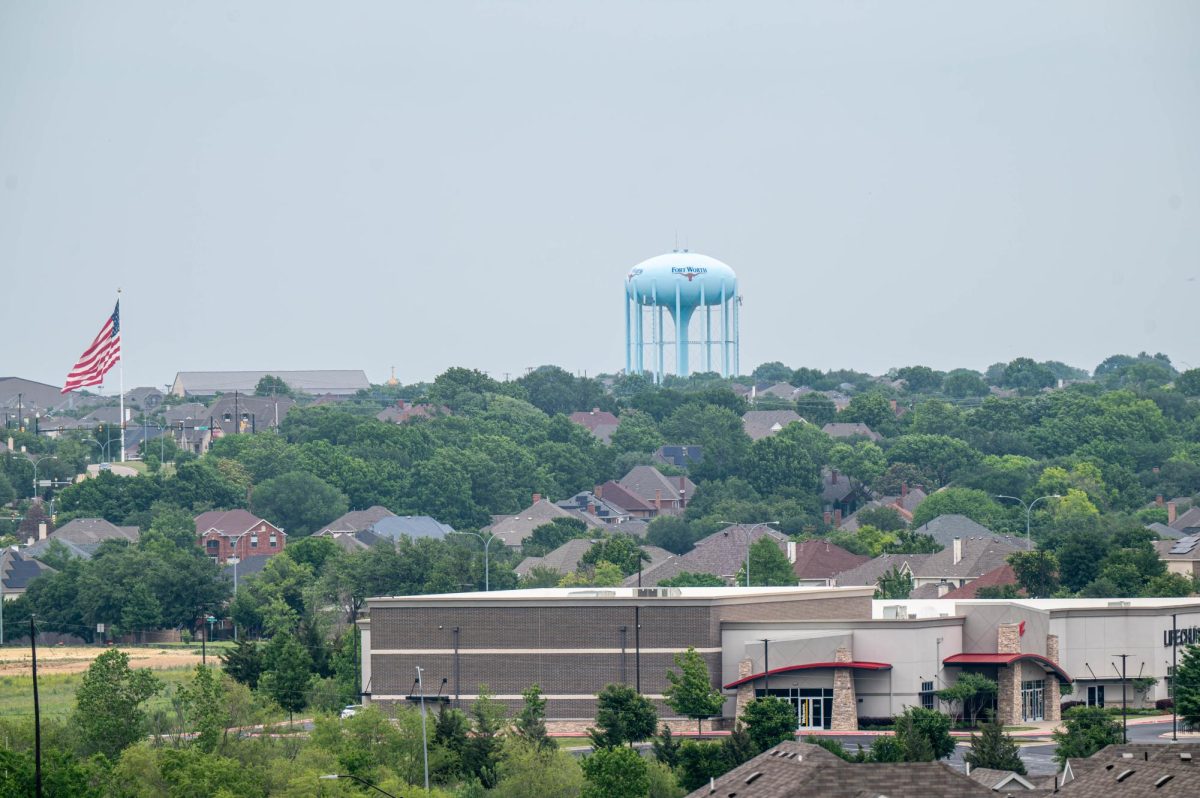A rare dinosaur track, originally discovered by the U.S. Army Corps of Engineers, was uncovered and studied by students and faculty in the geology department to help middle schoolers learn about science.
Sequential footprints, called a trackway, from several early duck-bill dinosaurs, 6-foot tall water birds and other animals were discovered in a 64-foot-long section of limestone near Grapevine Lake.
The trackway was covered with a layer of soil and concrete in 2006 to protect it from tourist activity and wave erosion caused by the nearby lake.
Floyd "Bo" Henk, an adjunct professor of geology and board member of Our Lands & Waters Foundation, a non-profit organization that partners with the Army Corps of Engineers, invited the university geology department to help make molds of the tracks to preserve them for study.
A portion of the trackway was uncovered Sept. 27 for a middle school field trip. A teacher from Dawson Middle School received a grant to uncover a portion of the tracks for a two-day field trip. The middle school students benefited from the opportunity to experience the preservation process, teachers from Dawson Middle School said.
“They could see the tracks in a natural environment,” said Carl Kurtz, a junior geology major at TCU. “It wasn’t something that was cleaned up, packaged and on display in a museum.”
The geology department joined the Army Corps of Engineers, Our Land & Waters Foundation, the Arlington Archosaur Site and other organizations to run a station for the field trip. Geologists and university students also made latex and plaster molds of the tracks.
University students explained the mold-making process and discussed what trackways reveal. Middle schoolers learned how specific track marks could indicate certain environmental and behavioral patterns.
Middle school students also helped paint layers of latex over the tracks, until rain cut the project short. The field trip’s second day was canceled, but the geologists and university students returned on the morning of Sept. 30 to complete the mold.
They used towels, hairdryers and a leaf blower to remove pools of rain water in the tracks.
“Early on we were seeing 15 to 20 minute drying time between layers,” Kurtz said. “By the end of the day, that had extended to nearly two hours.”
The molds will remain at the university until casts are made. Casts will go to Dawson Middle School and to the original site because it will not be possible to see the trackway once the lake levels rise again, Kurtz said.
Henk said the site will be turned into a park and learning education center for the metroplex.


